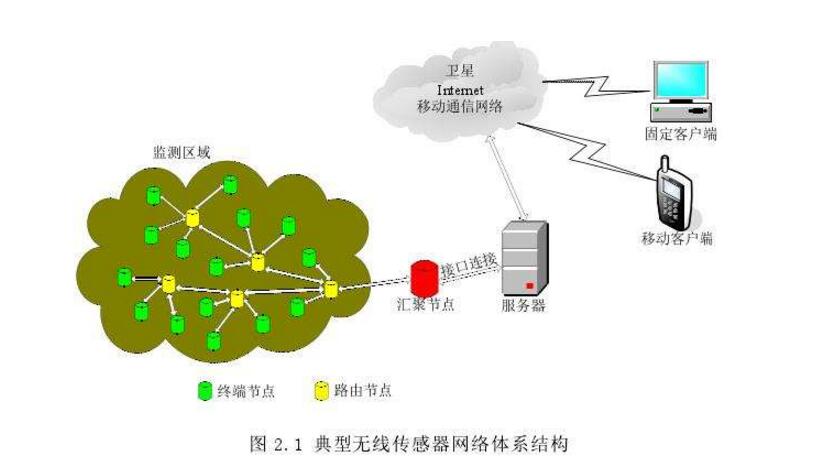The wireless sensor network (WSN) consists of randomly distributed micro-nodes integrated with sensors, data processing units and communication modules, which form a network through self-organizing. The sensor network has the high precision, high fault tolerance and large monitoring brought by distributed processing. Covering areas, remote monitoring and many other advantages have become one of the most important hot spots in international network research in the near future.
Wireless sensor network micronodes are one-off, requiring nodes to be inexpensive and working as long as possible. There should be no special router nodes in the wireless sensor network, each node is both a terminal node and a router node. Nodes are connected by a mobile ad hoc network and communicate using a multi-hop routing mechanism. Therefore, on a single node, on the one hand, the hardware must be low-energy, and wireless transmission is adopted; on the other hand, the software must support a multi-hop routing protocol. The IEEE802.15.4/ZigBee protocol fully considers the requirements of wireless sensor network applications and is a wireless communication protocol that is generally optimistic in the industry. Based on these basic ideas, this paper designs a wireless sensor network micro-node with high-end 8-bit AVR microcontroller ATmega128L as the core, combined with peripheral sensor and 2.4GHz wireless transceiver module CC2420, and has been applied in practice.
Micronode structure
The wireless sensor network micro node is composed of a data acquisition unit, a data processing unit, a data transmission unit and a power management unit 4, as shown in FIG. The data acquisition unit is responsible for monitoring the collection and data conversion of information in the area. In this design, the data acquisition unit includes temperature, humidity, light intensity, acceleration and atmospheric pressure sensors; the data processing unit is responsible for controlling the processing operations, routing protocols, and synchronization of the entire node. Positioning, power management, task management, etc.; the data transmission unit is responsible for wireless communication with other nodes, exchanging control messages and transmitting and receiving data; the sensor used by the power management unit gating, the node power is composed of two 1.5V alkaline batteries In the future, miniature button batteries will be used to further reduce the volume. In order to facilitate debugging and scalability, the data acquisition unit is separated to form two expandable motherboards that can be nested with each other.

Micro node module design
Data processing unit
The data processing unit in this design uses Atmel's ATmega128L microcontroller, which is a RISC-based 8-bit microcontroller produced by the low-power COMS process. It is the most powerful single-chip microcomputer in the current AVR series. The AVR core couples 32 working registers and a rich instruction set. All working registers are directly connected to the ALU, which realizes the operation of accessing two independent registers while executing a single instruction in one clock cycle. . This structure improves code efficiency and is about 10 times better than ordinary CISC microcontrollers.
The ATmega128L has a wealth of resources and extremely low power consumption. It has an on-chip 128KB program Flash, 4KB data SRAM, and can be expanded to 64KB E2PROM. In addition, it has eight 10-bit ADC channels, two 8-bit and two 16-bit hardware timer/counters, and can operate in a variety of different modes; eight PWM channels, programmable watchdog timers, and On-chip oscillator, on-chip analog comparator; UART, SPI, I2C bus interface; JTAG interface. In addition to the normal operating mode, there are six different levels of low power operation modes, each with different power consumption.
Collecting environmental parameter signals requires a CPU with a high sampling rate and a large amount of data. If the traditional 51 series is used as the CPU, there is a bottleneck between the peripheral A/D device speed and the CPU speed; if more complicated data processing and storage are added, the external ROM and RAM need to be expanded; so many peripheral devices are limited. The stability and speed of the system are improved, and the power consumption of the system is greatly increased. After comprehensive comparison, the data processing unit was developed using ATmega128L.
Aluminum Alloy LED lamps,Low Power LED lamps,LED line light
Kindwin Technology (H.K.) Limited , https://www.szktlled.com